Compared to its predecessors, Intel's third QLC SSD for the mainstream market has significantly increased its performance. But the SSD cannot always keep up with cheap TLC SSDs and ultimately fails because of the weakness in writing and the price that is too high for it.
Table of contents
- 1 Reading the fastest QLC SSD to date in the course
- Intel's new generation mainstream SSD
- ” Exclusive “SMI controller SM2265
- 144-Layer-QLC-NAND
- Features and prices at a glance
- 2 benchmarks, cache analysis and temperatures
- Test system and test methodology
- Cache analysis (SLC mode)
- Copy processes in Explorer
- Consistency of performance in PCMark 10
- CrystalDiskMark
- Temperatures over time
- 3 Conclusion
- Intel would have to turn the price screw again
Intel's new generation mainstream SSD
In December 2020, Intel presented the 670p SSD series, the successor to the mainstream 660p and 665p SSDs, and at the same time presented the product debut of the new 144-layer QLC NAND. The actual market launch followed last March with the publication of further details. It took a while before the 670p was widely available in Germany. In the meantime, at least the models with 512 GB and 1,024 GB (hereinafter “1 TB”) are available in local online shops, but the 2 TB version is still a long time coming.
In the familiar M.2-2280 format, the 670p delivers more power and a higher durability (TBW) than its predecessor. While Intel surprisingly discontinued the 665p after a brief appearance, the 660p is still being sold.
If the 665p was a rather small update of the 660p, the 670p brings significantly more performance. At the top, Intel promises 3,500 MB/s for reading and 2,700 MB/s for writing in SLC mode, which all QLC SSDs absolutely need, because otherwise the write performance is much too low.
1 TB: 370 TB
2 TB: 740 TB 1 TB: 300 TB
2 TB: 600 TB 512 GB: 100 TB
1 TB: 200 TB
2 TB: 400 TB
Intel makes the potentially higher durability of the new generation clear with an increase in the guaranteed write volume (“Total Bytes Written”, TBW). When comparing the 1 TB versions, the TBW increased from 200 TB (660p) to 300 TB (665p) and now to 370 TB (670p).
“Exclusive” SMI controller SM2265
The controller of the Intel 670p SSD bears the identifier SM2265 and comes from the well-known manufacturer Silicon Motion (SMI), but is still an “exotic” one. As far as the editors know, the 670p is the only SSD with this model for which Silicon Motion still does not provide any information on its product pages.
-
 Intel SSD 670p
Intel SSD 670p
Image 1 of 2
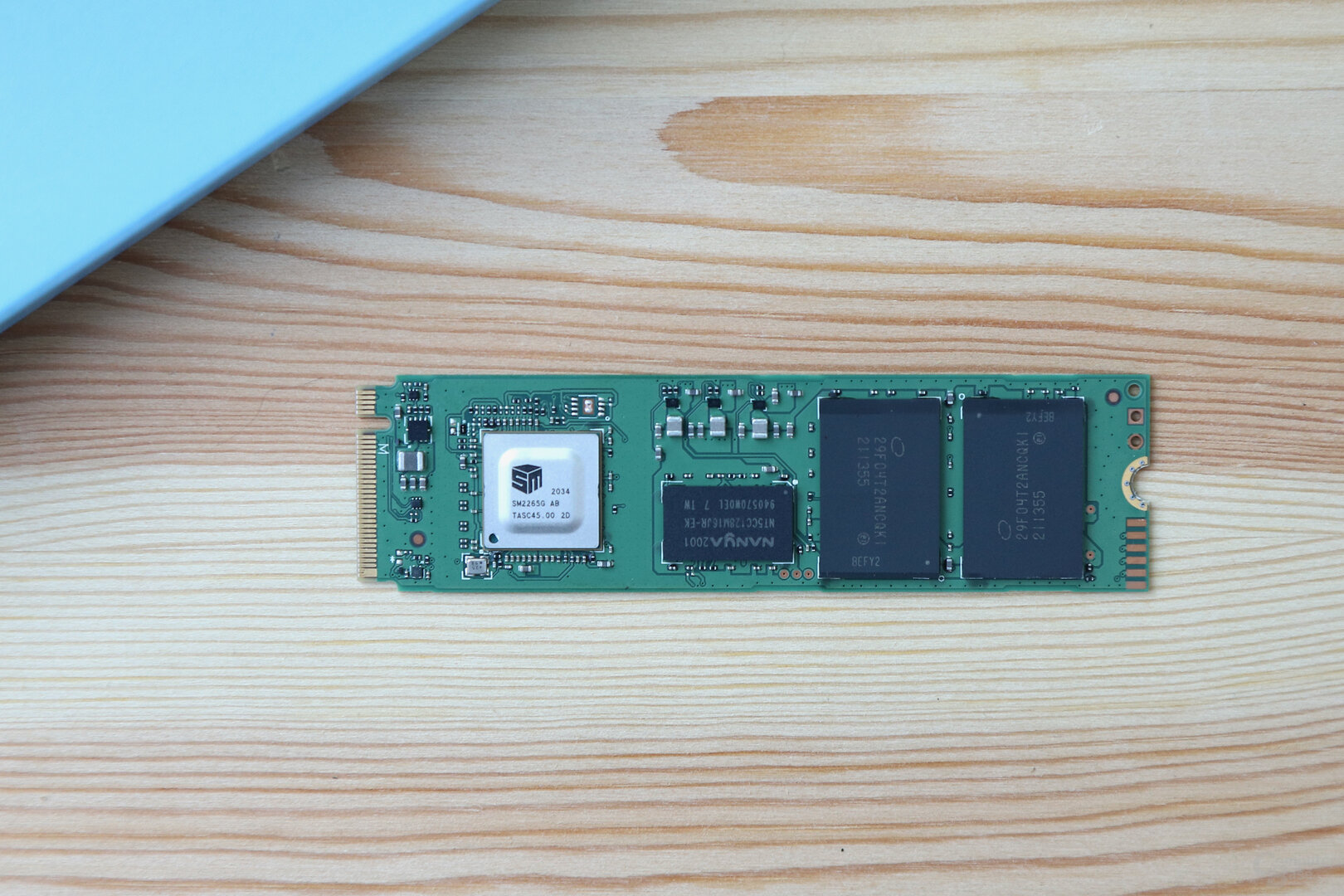 Intel SSD 670p
Intel SSD 670p  Intel SSD 670p
Intel SSD 670p According to a report, the SM2265 with two Cortex-R5 cores and four NAND channels should have a similar architecture to the SM2267 with PCIe 4.0 interface, but still uses PCIe 3.0.
The SM2265 is supported by a single DRAM module of the type DDR3L-1866 from Nanya. While a 1 GB DRAM cache is common with 1 TB SSDs, the Intel 670p only has 256 MB. Since even DRAM-less NVMe SSDs, which only use a few megabytes of the system RAM as cache via the HMB function, can deliver decent performance in everyday private life, this should not be a big problem.
144-Layer-QLC-NAND
In the 670p, Intel's first own 3D NAND generation after separation from partner Micron is used, which could also be the last of its own, because, as is well known, SK Hynix will take over Intel's NAND and SSD division. This is a floating gate architecture with 144 cell layers and, in this variant, 4 bits per cell (QLC). For the first time, three layer towers (3 × 48 = 144) are stacked on top of each other. A die has a capacity of 1,024 gigabits (128 GB). In the case of the tested 1 TB model, two NAND packages are installed, which therefore each contain four dies. The back of the board is not populated.
-
 Intel QLC NAND (Image: Intel)
Intel QLC NAND (Image: Intel)
Image 1 of 5
 Intel QLC NAND
Intel QLC NAND  Trap Cell
Trap Cell 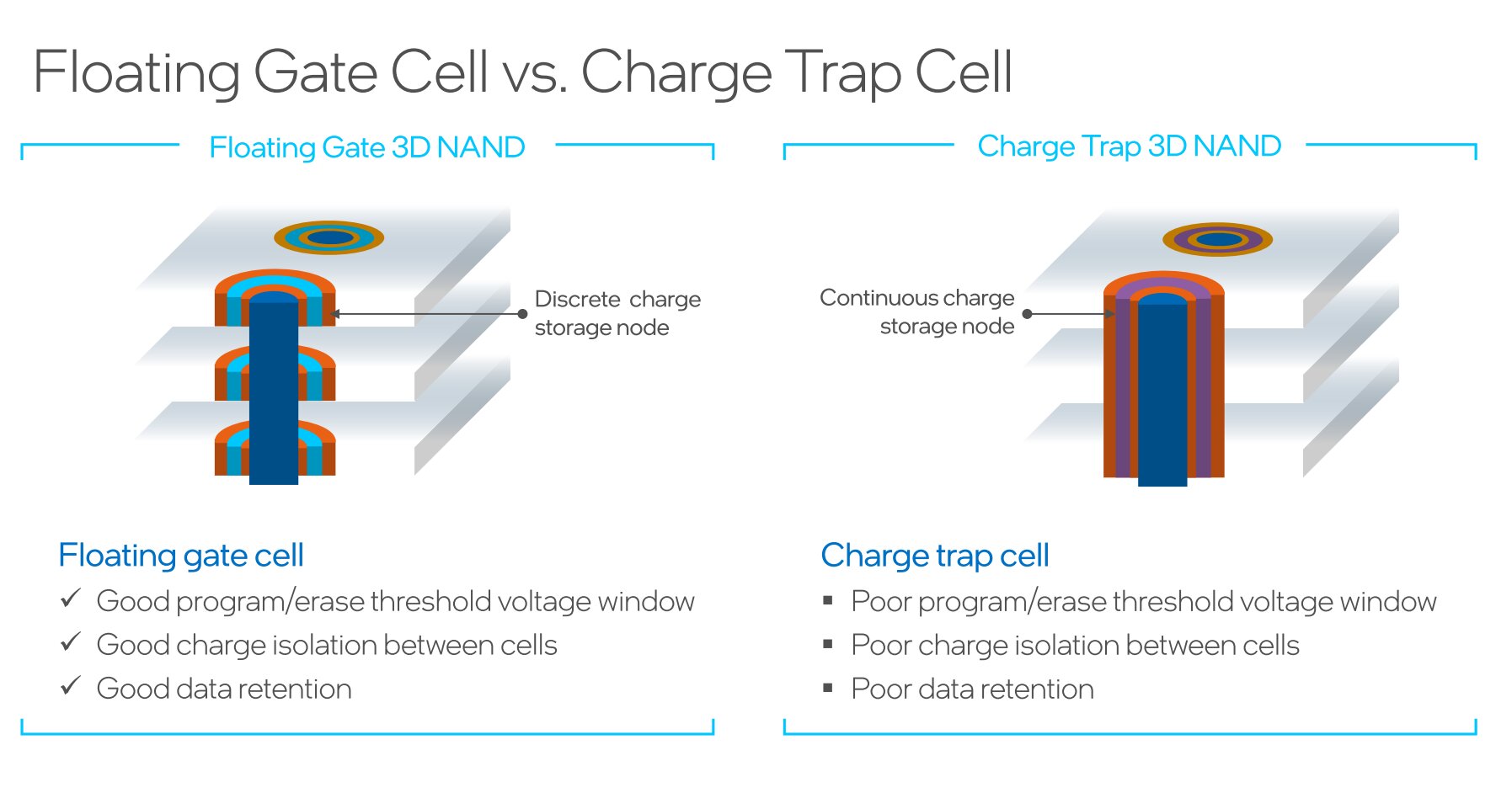 Floating Gate Cell vs. Charge Trap Cell
Floating Gate Cell vs. Charge Trap Cell  Intel's 3D-NAND generations (up to 96L with Micron)
Intel's 3D-NAND generations (up to 96L with Micron) While ex-partner Micron made a radical architecture change after the separation, Intel continues to rely on floating gate memory cells (FG) and sees advantages over charge trap flash technology (CTF), which practically all competitors use. With regard to QLC in particular, Intel sees FG cells as an advantage, as they are better shielded and can therefore retain information for longer. The loss of charge is significantly lower, especially over a longer period of time, as a graphic shows. In addition, Intel considers the FG principle to be very promising for future PLC-NAND with 5 bits per cell.
SLC cache
The dynamic SLC cache, which gets smaller with increasing fill level, should shrink more slowly than with the 660p. The static SLC cache that is always available remains the same at 6 to 24 GB. A maximum of 64 GB, 128 GB or 256 GB SLC cache is also available dynamically, provided there is enough free space. In total, up to 70 GB, 140 GB or 280 GB of data can be accelerated in SLC mode, which is checked in the test.
-
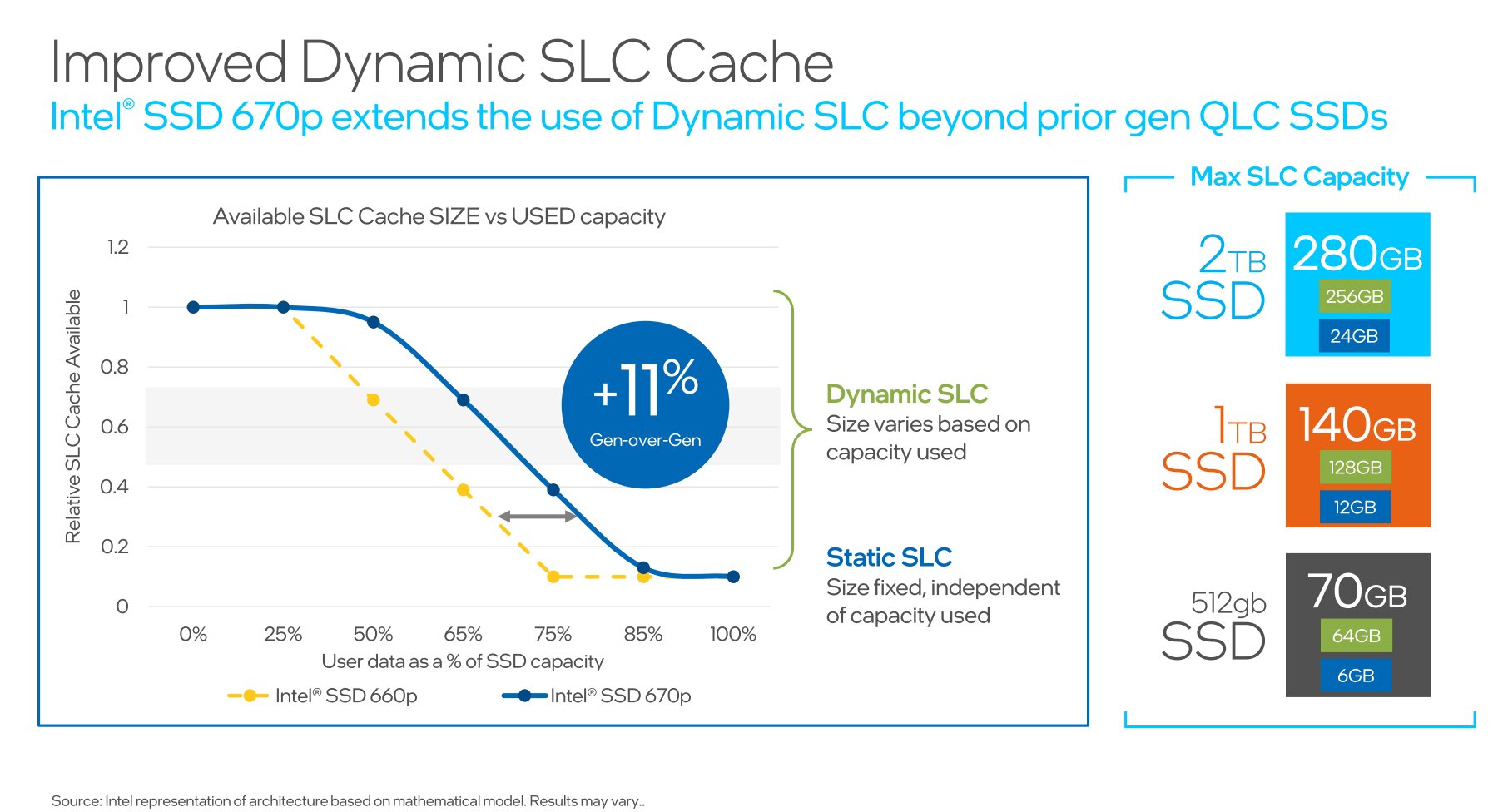 Intel SSD 670p (Image: Intel)
Intel SSD 670p (Image: Intel)
Image 1 of 2
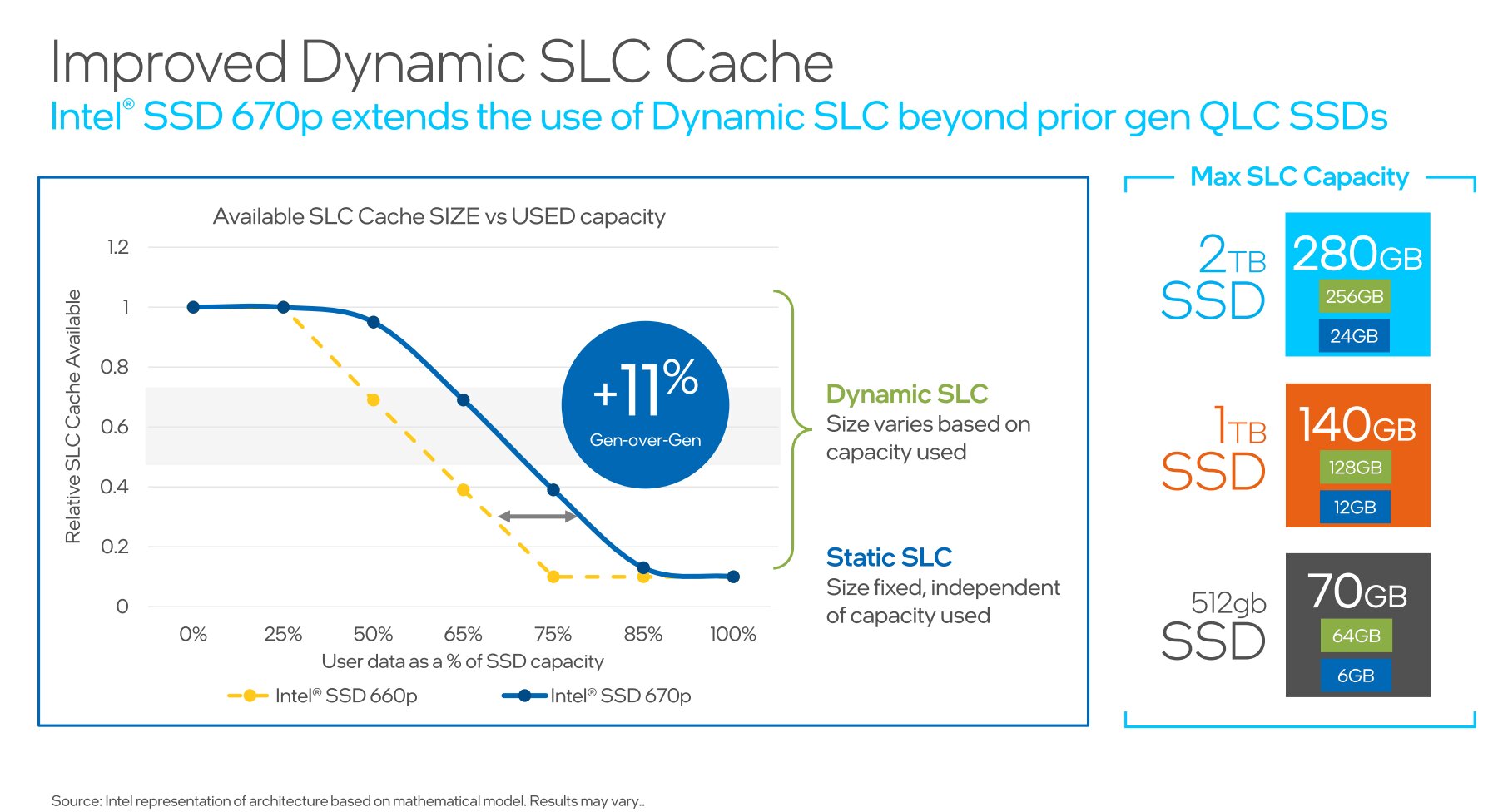 Intel SSD 670p
Intel SSD 670p 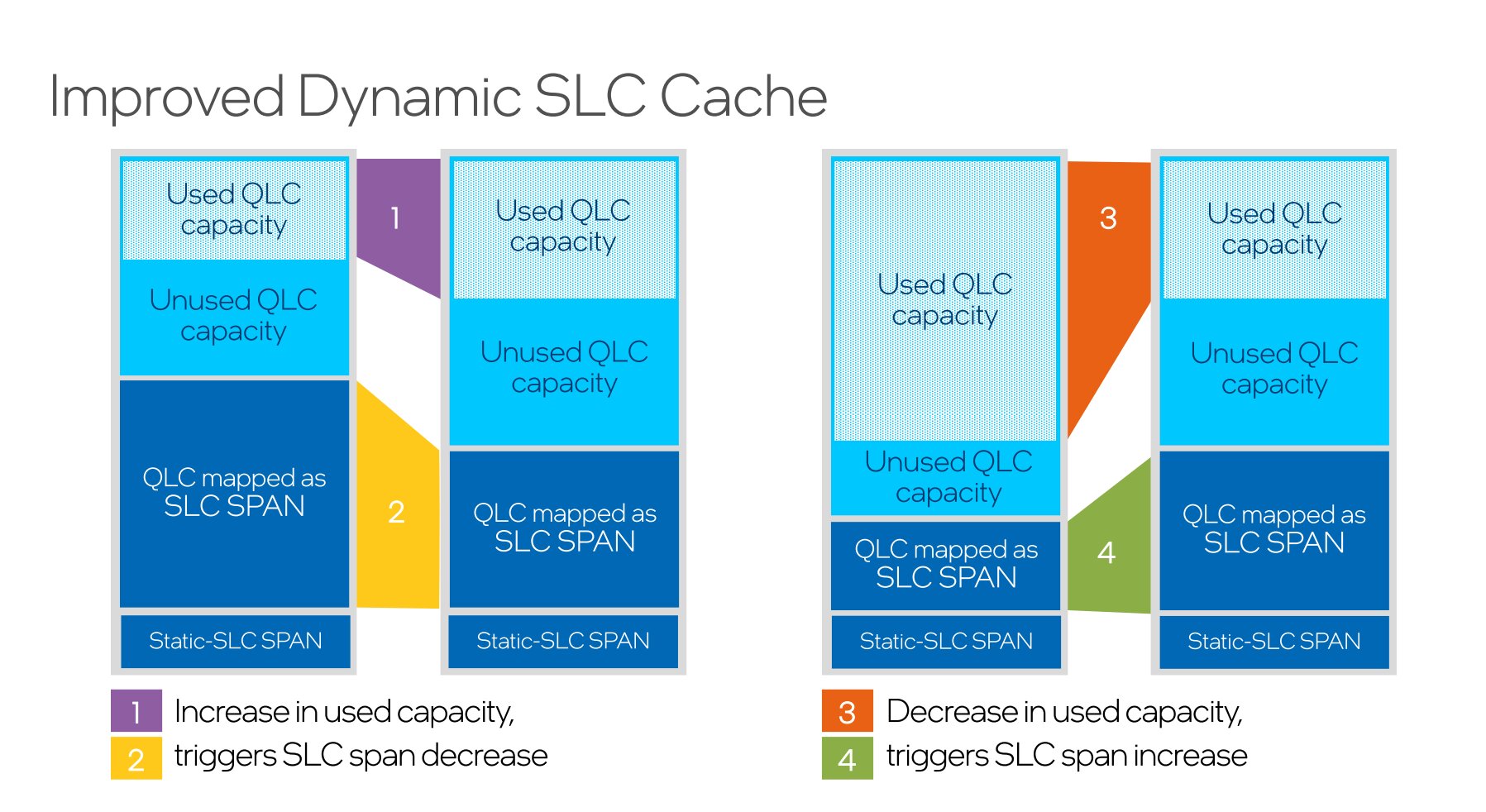 Intel SSD 670p
Intel SSD 670p Equipment and prices at a glance
Die Intel 670p supports data encryption according to AES-256 standard and is offered with a five-year guarantee, which expires prematurely if the above-mentioned TBW values are exceeded.
With prices of currently 63 euros (512 GB) and 108 euros (1 TB), the series is one of the cheaper, but by no means the cheapest NVMe SSDs. As mentioned at the beginning, the 2TB model is currently practically unavailable.
Intel 670p Intel 660p controller: Silicon Motion SM2265G, 4 NAND channels Silicon Motion SM2263EN, 4 NAND channels DRAM cache:? DDR3L-1866 variant 256 MB DDR3L-1866 256 MB DDR3L-1600 memory capacity: 512/1,024/2,048 GB memory chips: Intel? ? QLC (3D, 144 layers) NAND, 1,024 Gbit IMFT? ? QLC (3D, 64 layers) NAND, 1,024 Gbit Form factor: M.2 (80 mm) Interface: PCIe 3.0 x4 seq. Read: 3,000 MB/s variant 3,500 MB/s 1,500 MB/s variant 1,800 MB/s seq. Write : 1,600 MB/s version2,500 MB/s version2,700 MB/s 1,000 MB/s version1,800 MB/s 4K random read: 110,000 IOPS version220,000 IOPS version310,000 IOPS 90,000 IOPS version150,000 IOPS version220,000 IOPS 4K random write: 315,000 IOPS version330 .000 IOPS variant 340,000 IOPS 220,000 IOPS Power consumption Activity (typ.): 0.080 W? Power consumption activity (max.):? Power consumption idle: 25.0 mW? Power consumption DevSleep:? no DevSleep power consumption L1.2:? Functions: NVMe, NCQ, TRIM, SMART, Garbage Collection Encryption: AES 256 Total Bytes Written (TBW): 185 TerabyteVariant370 TerabyteVariant740 Terabyte 100 TerabyteVariant200 TerabyteVariant400 Terabyte Warranty: 5 Years Price: from 59 €/from 110 €/- from 54 €/from 104 €/from 210 € Price per GB: € 0.12/€ 0.11/- € 0.10/€ 0.10/€ 0.10
On the next Page: Benchmarks, cache analysis and temperatures

